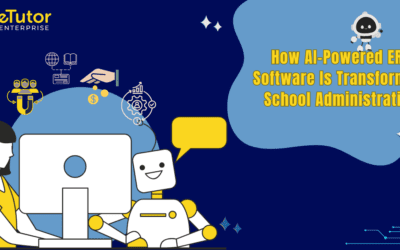Combating Cheating in the Online Exam World: Strategies & Technologies

Table of Contents
ToggleIntroduction
Examiners and examinees have had the option of conducting examinations online before it became a requirement during the pandemic’s lockdowns. But this flexibility always came with a risk for invigilators: the integrity of the exam scores.
Cheating in online exams is challenging to resist. With no one monitoring the exam takers and their surroundings, it takes less effort to search the internet for an answer or even browse their textbooks and notes in the background. Even worse, examinations taken asynchronously can be worked on by a team of examinees, failing to measure an individual’s knowledge or understanding of the topic being tested.
In this article, we will discuss strategies and technologies to help you combat cheating in online exams.
What Counts as Cheating in Online Exams?
Cheating on online exams devalues qualifications, disadvantages honest students, and damages institutional reputations. As a result, online exam passers show poor learning outcomes, placing unprepared individuals in critical roles and increasing stress among honest examinees.
Strategies for Preventing Cheating in Online Exams
To maximize the integrity of your online exams, here are some key strategies you can use:
Adopt Secure Exam Proctoring Techniques
Live Proctoring: Involves real-time monitoring of examinees by proctors through webcams and microphones, allowing for immediate intervention upon observing suspicious behavior. This method demands considerable manpower based on examinee numbers and can induce stress in students due to the sensation of being constantly watched.
Recorded Proctoring: Examinees are captured via their webcams and microphones for later examination, enabling exam scheduling flexibility as live monitoring isn’t needed. This approach decreases the immediate pressure on students relative to live proctoring but necessitates substantial time and resources for reviewing recordings.
Automated Proctoring: Employs AI and machine learning algorithms to automatically detect and flag suspicious activities during exams, reducing pressure on educators. Features may include identity verification, eye movement tracking, and keystroke analysis, offering scalability without a proportional increase in proctor numbers. However, it raises privacy concerns and the risk of false positives in misconduct identification.
Design Cheat-Resistant Exams
Alternatively, you can create an exam that is harder to cheat on using these strategies:
Randomizing Questions and Answer Choices: This method prevents students from sharing answers, as each examinee receives a unique set of questions or answer options. You can use online exam creation software to help speed up your exam creation process.
Implementing Time Limits: Time constraints reduce students’ opportunities to search for answers elsewhere or collaborate with peers.
Using Question Pools and Question Banks: Drawing questions randomly from a large pool ensures that each student receives a different version of the exam, making cheating difficult.
Promote Academic Integrity
You can also promote academic integrity through these three E’s:
Educating Students on the Consequences of Cheating: Informing students about how cheating can impact their academic career and future opportunities can deter dishonest behavior.
Establishing Clear Guidelines and Expectations: Communicating the rules and what is expected from students in terms of academic integrity helps to set a standard and reduce incidents of cheating.
Encouraging a Culture of Honesty and Integrity: Fostering an environment where honesty is valued and rewarded can lead to a decrease in cheating and an increase in genuine learning and achievement.
You can also use software that integrates with plagiarism detection tools to automate identifying plagiarized submissions. This integration ensures that all submitted works are original and helps maintain academic integrity by discouraging copy-paste culture among students.
At the same time, AI can be employed to analyze patterns in student submissions and exam behaviors, identifying outliers that may indicate dishonest practices. By comparing current submissions against a student’s previous works or analyzing typing patterns and interaction with the exam interface, AI tools can flag instances of potential academic misconduct for further review.
This advanced approach adds an additional layer of security, making it more difficult for students to engage in cheating while promoting a fair and equitable evaluation environment

Technologies for Enhancing Exam Security
While examinees leverage technology for better results in exams, examiners can do the same by adapting eLearning software with the following features:
Exam Lockdown Browsers: Prevents students from accessing browsers, applications, or files on their computer during an exam, ensuring they cannot search for answers online or access unauthorized resources.
Biometric Authentication: Uses unique biological characteristics, such as fingerprints or facial recognition, to verify the identity of students before and during the exam, reducing the risk of impersonation.
IP Tracking and Geolocation: Monitors and records the IP addresses and locations of students taking the exam to ensure that the exam is being taken in a permissible location and to detect and prevent attempts at cheating from multiple locations.
You can also use software that integrates with plagiarism detection tools to automate identifying plagiarized submissions. This integration ensures that all submitted works are original and helps maintain academic integrity by discouraging copy-paste culture among students.
At the same time, AI can be employed to analyze patterns in student submissions and exam behaviors, identifying outliers that may indicate dishonest practices. By comparing current submissions against a student’s previous works or analyzing typing patterns and interaction with the exam interface, AI tools can flag instances of potential academic misconduct for further review. This advanced approach adds an additional layer of security, making it more difficult for students to engage in cheating while promoting a fair and equitable evaluation environment.
Best Practices for Schools and Educators
Consistently adhering to a set of best practices can help schools and educators standardize expectations among examinees, regardless of the type of exam being conducted. Here are some best practices we recommend to test centers and institutions:
Training faculty and staff: Test centers need to provide better training to invigilators to improve their skills in detecting and preventing cheating during exams. Whether examiners have a higher degree, such as a doctorate degree in education, or not, they will need extra training to keep up with the new technology in their field. They can also be trained to be more familiar with e-learning software so that they can understand the ins and outs of the platform they will use during distance education sessions.
Establishing policies and procedures: Any institution conducting exams needs to have a clear set of guidelines that outline the repercussions for examinees. A recent study in the Journal of Pedagogies shows that examinees without an honor code are twice more likely to cheat than examinees with an established honor code.
Continuous evaluation and improvement: All schools and educators need to assess the effectiveness of their existing strategies and adapt them based on emerging trends in cheating. For example, with artificial intelligence use on the rise, it may benefit examiners to consider questions that test the student’s critical thinking.
Reduce Online Exam Cheating The Smart Way
Combating cheating in the online exam world demands a multifaceted approach that integrates effective strategies and technologies. Upholding academic integrity is essential for maintaining the credibility of qualifications and ensuring fair evaluation of students’ knowledge and skills.
By implementing secure exam proctoring techniques, designing cheat-resistant exams, promoting academic integrity, and enhancing exam security with advanced technologies, test centers and institutions can mitigate the risks of online exam cheating. Continuous evaluation and improvement are crucial for staying ahead of evolving cheating methods and fostering a culture of honesty and fairness in academic assessment.
Through collective efforts and commitment to best practices, schools and educators can uphold the integrity of online examinations and preserve the value of academic credentials. To find out more about e-learning software with comprehensive tools to reduce the incidents of online cheating, read about our e-Tutor exam software.
Recent Posts
- eTutor Offline Exam Software for IIT-JEE, NEET, and Foundation with Student Performance Analytics
- NEET Test Generator for Academies & K-12 Schools
- How School ERP Software Maximizes Productivity and Minimizes Cost
- How Does ERP Software for Schools Help Educators?
- Why Educational Institutions Need Online Exam Software in 2025







